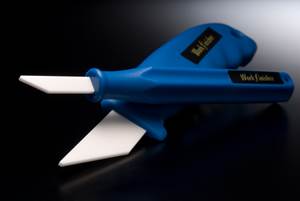Keeping Up with ISO: Making Certification a Profitable Proposition
The latest ISO revision challenges companies to examine the ways they consider, monitor, manage and reduce costs.
The principles of ISO provide the framework in which to build and grow a business, which includes making a profit and maintaining cash on hand. ISO 9001:2015 facilitates financial management through a better understanding of current operations.
Financial management is not the same as cost cutting. Financial management is a process for determining where costs arise and then controlling them throughout the entire manufacturing process in order to improve profits and overall operation. The latest ISO revision challenges companies to examine the ways they consider, monitor, manage and reduce costs.
The language of financial management, according to the ISO 9001:2015 revision, is money. Quality professionals recognize the technical terminology of production, such as defect rates, out of spec and failure modes, but this has not gained the attention of executive management, which is now responsible for the company’s quality efforts under ISO 9001:2015. To combat this, ISO now requires a cost of quality accounting system that shows the dollars that are being captured and expresses quality in terms of money. Cost of quality is the sum of costs incurred in maintaining acceptable quality levels plus the cost of failure to maintain that level (cost of poor quality). This system also classifies the types of costs as failure, appraisal and prevention costs. Internal failures can be scrap, rework and repairs; external failures can be returned products, liability claims and warranty expenses; prevention refers to quality/safety training, removal of defect causes and preventive maintenance; and appraisal means incoming material inspection, in-process inspection and testing, and calibration. Classification is followed by a risk analysis.
This new quality accounting system allows professionals to express the costs of quality in terms related to the company’s strategic objectives, which gets the executive management’s attention. For example, net income includes net sales less operating expenses; operating expenses include cost of quality factors; total assets include accounts receivable plus all inventory (in-process inventory); return on total assets is the ratio of net income to total assets; and net income affects the company’s market value.
Return on total assets is a measure of profitability and relates directly to the company’s strategic goals. This means the person responsible for quality within a company, now the CEO/owner, must be able to monetize quality problems, improvements and benefits to effectively communicate them. A technical and business/accounting background will help the CEO/owner convert quality metrics into financial terms.
Total cost of ownership is a financial estimate used within the cost-of-quality accounting system to help companies determine the direct and indirect costs of a product or system. It accounts for overhead, balance sheets, risks, corporate strategy, and other external and internal business considerations.
Using all of this information, companies can better evaluate sourcing and even make a case when selling against offshore competitors. Most companies make sourcing decisions based solely on price, which oftentimes results in a 20- to 30-percent miscalculation of actual costs.
ISO 9001:2015 requires auditors to be specific to a particular industry. For the plastics industry, this means that they understand the tasks and vocabulary related to raw materials, tooling, moldmaking and molding processes. This requirement replaces the previous general, off-the-self auditing process. For example, a first-party audit refers to internal auditing or self auditing, a second-party audit refers to external auditing or customer auditing/industry-specific; and a third-party audit refers to external auditing or general, off-the-self auditing.
The cost of implementing any ISO system should be affordable for a manufacturer of any size, but using a non-industry-specific trainer and/or auditor to implement an ISO system will take longer, and the cost can vary from $25,000 to $100,000. A trainer trains all employees in the ISO principles of quality, and an auditor verifies and validates the company’s ISO compliance. The size of this expense depends on company size and an initial on-site evaluation, which includes an ISO gap analysis that studies how the organization is currently working and reveals what needs to be done for it to become ISO compliant.
The cost of industry-specific trainers/auditors is much lower at about $10,000, and implementation can be completed within six months due to their industry knowledge. For example, plastics professional trainers and auditors are able to help moldmakers and molders write and streamline the required documentation for an effective and efficient quality manual, work procedures and work instructions.
Whether you are looking to implement ISO 9001:2015 or you are already ISO 9001:2008-certified, ask yourself if ISO certification is truly improving your business financially. Are you bogged down with third-party documentation, 2-inch thick manuals and five-page procedures? Is top-down communication at a standstill?
A first step is asking an ISO auditor to do a thorough preliminary gap analysis for ISO 9001:2015 for all departments. This will show where individuals can improve their performance. The assessment begins with receiving of raw materials and reviews the entire operation through finished goods, including all support functions. It is a complete health check of operations, providing observations and recommendations for improvement. Resulting deliverables include a supplier score card, audit results, specific improvement recommendations and a complete briefing at the end of the assessment.
Related Content
How To Get Your Team on Board with ISO 9001
ISO 9001 can simplify life for the business and the team. Here are 4 ways to sell this certification to gain your team's support.
Read MoreR&D Tax Credit Refresher
A list of the top 10 moldmaking activities frequently performed through daily business that qualifies for an R&D tax credit.
Read MoreCertified Quality Management for Plastics Professionals – Materials to Tooling to Recycling
Why is certification of a shop’s quality management system to ISO 9001, AS9100, IATF 16949 or ISO 13485 so special? What does the certification signify? And what supports the paper behind the framed certificate?
Read MoreCeramic Deburring, Deflashing Tools Take Into Consideration Difficult Materials, Operator Safety
Boride Engineered Abrasives introduces its new mold polishing equipment, the Work Finisher Tool, which is lightweight, long lasting, won’t rust and is safer and easier to use.
Read MoreRead Next
How to Use Strategic Planning Tools, Data to Manage the Human Side of Business
Q&A with Marion Wells, MMT EAB member and founder of Human Asset Management.
Read MoreHow to Use Continuing Education to Remain Competitive in Moldmaking
Continued training helps moldmakers make tooling decisions and properly use the latest cutting tool to efficiently machine high-quality molds.
Read MoreReasons to Use Fiber Lasers for Mold Cleaning
Fiber lasers offer a simplicity, speed, control and portability, minimizing mold cleaning risks.
Read More

















.jpg;maxWidth=300;quality=90)



_300x250 3.png;maxWidth=300;quality=90)







_970x250 4.png;maxWidth=970;quality=90)